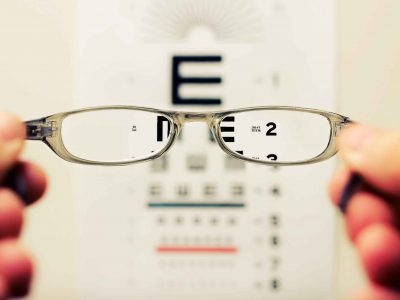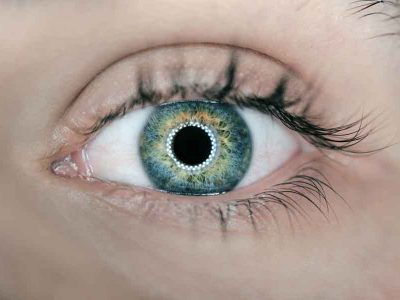Eye sight begins to change in the early to mid-40s and many adults start to have problems seeing clearly at close distances, especially when reading and working on the computer. This is among the most common problems adults develop between ages 41 to 60. This normal change in the eye’s focusing ability, called presbyopia, will continue to progress over time.
During these years it is important to have eye examination at least every two years to check for developing eye and vision problems.
Adults over 40 who have certain health problems may be more at risk for developing eye and vision problems e.g
- Diabetes
- High Blood pressure
- High cholesterol
- Thyroid problems
- Any family history of glaucoma or macular degeneration.
- Certain medications


Age-related Vision Changes
Just like your body, your eyes and vision change over time. While not everyone will experience the same symptoms, the following are common age-related vision changes:
- Need for more light. As you age, you need more light to see as well as you used to. Brighter lights in your work area or next to your reading chair will help make reading and other close-up tasks easier.
- Difficulty reading and doing close work. Printed materials can become less clear, in part because the lens in your eye becomes less flexible over time. This makes it harder for your eyes to focus on near objects than when you were younger.
- Problems with glare. When driving, you may notice additional glare from headlights at night. Changes in your lenses in your eyes cause light entering the eye to be scattered rather than focused precisely on the retina creating more glare.
- Changes in colour perception. The normally clear lens located inside your eye may start to discolour. This makes it harder to see and distinguish between certain colour shades.
- Reduced tear production. With age, the tear glands in your eyes will produce fewer tears. This is particularly true for women experiencing hormonal changes. As a result, your eyes may feel dry and irritated. Having an adequate amount of tears is essential for keeping your eyes healthy and for maintaining clear sight.
Losing this focusing ability for near vision, called presbyopia occurs because the lens inside the eye becomes less flexible. This flexibility allows the eye to change focus from objects that are far away to objects that are close. People with presbyopia have several options to regain clear near vision. They include:
- Eyeglasses, including single vision reading glasses and multifocal lenses
- Contact lenses, including monovision and bifocal lenses
- Laser surgery and other refractive surgery procedures
As you continue to age, presbyopia becomes more advanced. You may notice that you need to change your eyeglass or contact lens prescriptions more frequently than you used to. Around age 60, these changes in near vision should stop, and prescription changes should occur less frequently.


Important tips for protecting your eyesight
1. Regular check ups
2. Wear good quality sunglasses on sunny days even in winter
3. Eat a healthy diet including lots of coloured fruit and vegetables
4. Take regular exercise which helps improve circulation
5. Limit screen time if possible and take regular breaks from the screen

Warning Signs of Eye Health Problems
This is also the time in life when your risk for developing a number of eye and vision problems increases. The following symptoms could be the early warning signs of a serious eye health problem:
- Fluctuating vision. Frequent changes in how clearly you can see may be a sign of diabetes or hypertension (high blood pressure). These chronic conditions can damage the tiny blood vessels in the retina, the light-sensitive layer at the back of the eye. This vision loss can sometimes be permanent.
- Seeing floaters and flashes. Occasionally, you may see spots or floaters in your eyes. In most cases, these are shadowy images of particles floating in the fluid that fills the inside of the eye. Although they can be annoying, spots and floaters generally do not harm vision. They are a natural part of the eye’s aging process.
However if you suddenly see more floaters than normal, along with bright, flashing lights, see your optometrist immediately. This could be a sign that you have a tear in your retina, and it could detach. This should be treated immediately to prevent serious loss of vision.
Loss of side vision. Losing peripheral or side vision may be a sign of glaucoma. Glaucoma occurs when the optic nerve is damaged and no longer transmits all visual images to the brain. It often has no symptoms until damage your vision has begun.
- Seeing distorted images. Straight lines that appear distorted or wavy or an empty area in the centre of your vision could be signs of age-related macular degeration(AMD). The disease affects the macula, which is the part of your retina that is responsible for central vision. The disease causes a blind spot in the middle of your field of vision.
Regular eye examinations and early diagnosis and treatment of eye diseases can help you preserve good vision throughout your life.


By age 65 there is a high chance of some form of vision-impairing eye condition. The four major age-related eye diseases (AREDs) are: glaucoma, cataracts, macular degeneration and diabetic retinopathy.
Glaucoma
Glaucoma occurs when the pressure within the eye is elevated leading to damage to the optic nerve and resulting in vision loss and blindness. There are often no initial symptoms. However, as the disease progresses, a person with glaucoma may notice their side or peripheral vision gradually failing. Sufferers may experience worsening tunnel vision if left untreated.
There are many different types of medications (in eye drop and pill form) that are used to treat glaucoma. In some people, however, medications alone do not successfully control increased eye pressure, and surgery needs to be performed.
Risk factors for glaucoma include age, family history of glaucoma, the use of steroid medications and near-sightedness.
Cataracts
A cataract is a clouding of the eye’s usually transparent lens. The lens is composed of water and protein, but if the protein clumps together, it can start to obscure transmission of light through the lens. If the cataract worsens and begins to severely affect vision, surgery may be necessary to remove the cloudy lens and replace it with a new one.
People with cataracts often complain about glare, cloudy/fuzzy vision, double vision in one eye or halos around lights. Surgery is the only way to correct vision loss caused by cataracts.
Getting older is a major risk factor for cataracts, and women are at slightly higher risk than men. People who smoke, do not protect their eyes from the sun and have a family history of cataracts are more likely to develop them as well.


Macular Degeneration
Macular Degeneration (MD) diminishes sight in a dramatic way and affects the central vision. It is the leading cause of blindness in the world and every day 200 people in the UK are diagnosed with it.
MD is a disease of the retina caused by ageing. The retina is the nerve tissue lining the back of your eye.
There are 2 types of macular degeneration.
1.The first type, called dry macular degeneration, gets worse very slowly.
2. The other type gets worse very quickly. This needs to be seen as an emergency in a hospital eye unit for prompt treatment.
Age is the biggest risk factor for developing MD. Family history, high blood pressure and smoking are other risk factors.
Many studies suggest the best way to avoid AMD is to avoid smoking, keep active and eat healthily. Our eyes need certain carotenoids called Lutein and Zeaxanthin to protect our corneas. We, therefore, need to eat foods rich in these particular carotenoids, such as maize, orange peppers, oranges, courgettes, spinach, grapes and many varieties of squash (Basically any fruit or vegetable that is orange, green and yellow)
Recent research also shows that too much blue light can also damage our eyes so it is best to limit our screen time, especially in the dark.
Retinal detachment
Retinal detachment occurs when the inner and outer layers of the retina become separated. Without a retina, the eye cannot communicate with the brain, making vision impossible. Symptoms of retinal detachment include: a sudden appearance of spots or flashes of light; vision that appears wavy, as if you were under water; and a dark shadow anywhere in your field of vision. With surgery or laser treatment, doctors often can reattach the retina and bring back all or part of your eyesight.
Diabetic Retinopathy
This potentially blinding disorder is a complication of diabetes. Diabetes causes abnormal changes in the retina’s blood vessels, causing them to become leaky and grow where they should not. These new vessels tend to break and bleed. As they try to heal, the damaged blood vessels will contract and detach the retina.
Symptoms of diabetic retinopathy include shadows or dark objects that appear to “float” across your field of vision, blurred or distorted vision, partial loss of vision and pain in the eye.
Consistently high blood sugar and high blood pressure are associated with retinopathy. Type 2 diabetics who use the medicine rosiglitazone (brand names Avandia, Avandamet and Avandaryl) to manage their blood sugar may be at higher risk for problems.
There is no cure for diabetic retinopathy. However, laser treatment (photocoagulation) is usually very effective at preventing vision loss if it is done before the retina has been severely damaged. Surgical removal of the vitreous gel (vitrectomy) may also help improve vision if the condition is caught early enough.

Most age-related eye conditions must be detected and treated early on to prevent lasting damage. A comprehensive eye exam is recommended every 1-2 years, depending on a person’s age and unique risk factors.
It is worth paying the extra to have a full retinal picture which can detect any serious problems but also serves as a base line for future tests.
Other less serious eye conditions can occur such as-
-Dry eyes happen when tear glands cannot make enough tears or produce poor quality tears. Dry eyes can be uncomfortable, causing itching, burning or even some loss of vision. Your eye doctor may suggest using a humidifier in your home or special eye drops that simulate real tears. Surgery may be needed in more serious cases of dry eyes.
-Tearing or having too many tears, can come from being sensitive to light, wind, or temperature changes. Protecting your eyes by shielding them or wearing sunglasses can sometimes solve the problem. Tearing may also mean that you have a more serious problem, such as an eye infection or a blocked tear duct. In addition, people with dry eyes may tear excessively because dry eyes are easily irritated. Your eye doctor can treat or correct both of these conditions.
-Conjunctivitis happens when the tissue that lines the eyelids and covers the sclera becomes inflamed. It is sometimes called “pink eye” or “red eye.” It can cause redness, itching, burning, tearing, or a feeling of something in the eye. Conjunctivitis occurs in people of all ages and can be caused by infection, exposure to chemicals and irritants or allergies.
-Corneal diseases and conditions can cause redness, watery eyes, pain, reduced vision, or a halo effect. The cornea is the clear, dome-shaped “window” at the front of the eye. It helps to focus light that enters the eye. Disease, infection, injury, toxic agents, and other elements can damage the cornea. Treatments include using medicated eye drops. Some corneal diseases may require surgery.
-Eyelid problems can be the result of different diseases or conditions. The eyelids protect the eye, distribute tears, and limit the amount of light entering the eye. Pain, itching, tearing, and sensitivity to light are common symptoms of eyelid problems. Other problems may include drooping eyelids (ptosis), blinking spasms (blepharospasm), or inflamed eyelids near the eyelashes (blepharitis). Eyelid problems often can be treated with medication or surgery.
Sources-
Aoa.org
Aging care.com
NHS
my.clevelandclinic.org

